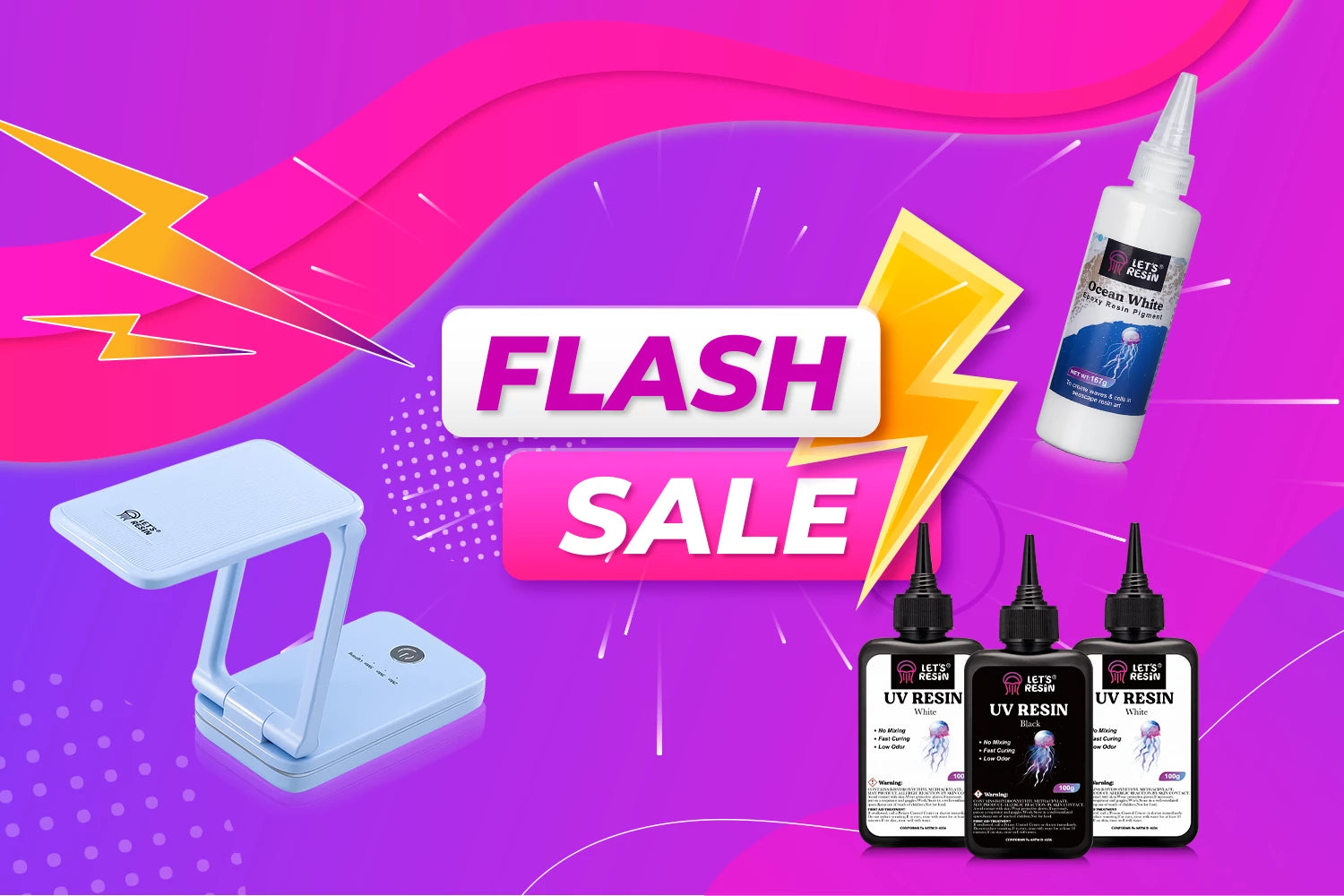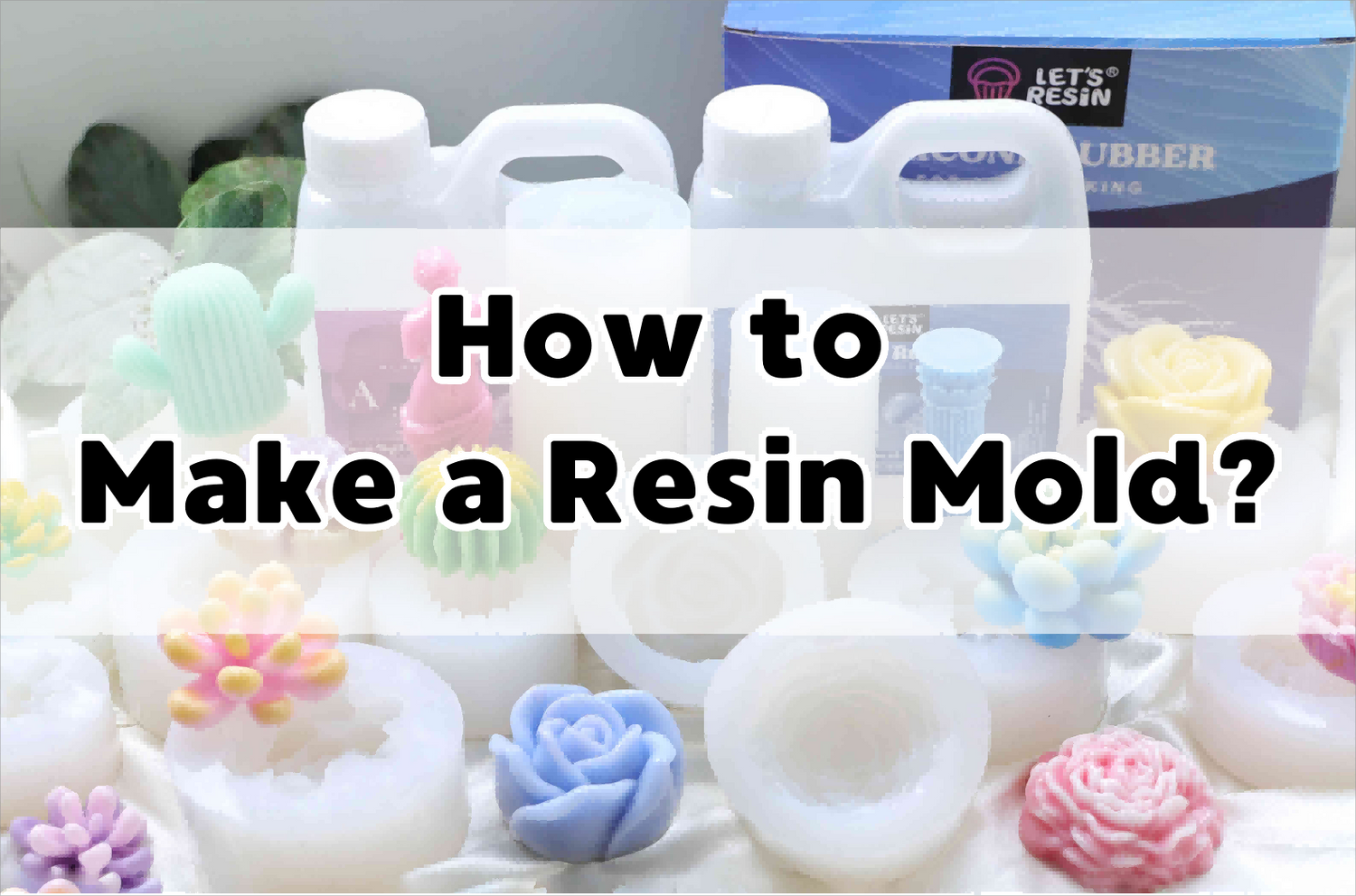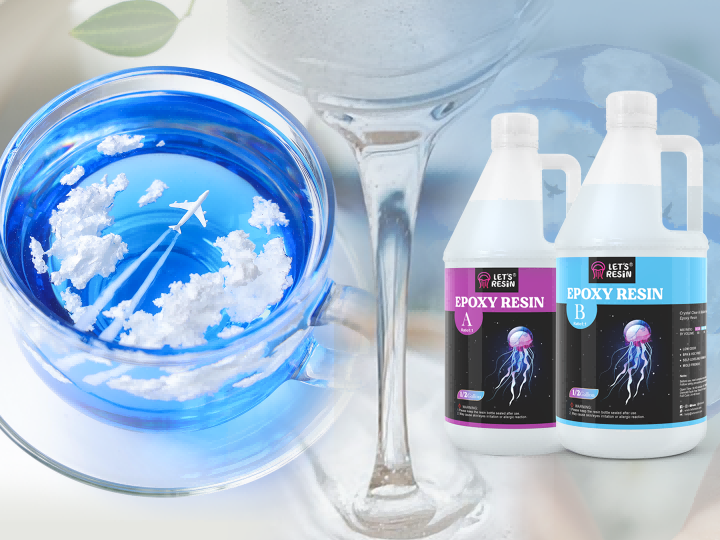Hi everyone! In the first episode of the beginner tutorial, we share the precautions for mixing epoxy resin. Today is the second episode, we will share with you some detailed tips on color mixing and bubble removing that are often encountered in resin working.
⭐ Beginner
Video Tutorial
- ①COLORING
- ②DEFOAMING
Color mixing method of resin
1. Resin dye (Timeline: 0:30-0:53)
Resin can be mixed with many kinds of liquid pigment. The first one is resin dye, including translucent resin dye, opaque resin dye, macaron resin dye, and alcohol ink. This allows you to achieve transparent or solid color effects. Please do not add more than 6% of the total volume of the mixed resin,otherwise it may cause resin not cured correctly.
2. Mica powder (Timeline: 0:54-1:08)
The second is pigment powder, including mica powder, chameleon mica powder, etc. It can give a sparkling effect and is often used in crafting tabletops and wooden projects.
3. Fine Glitter (Timeline: 1:09-1:23)
The third is glitter, which can create a sparkling effect. Colors and types can be freely matched, and it is suitable for embellishment in resin for decoration.
4. Chunky Glitter (Timeline: 1:24-2:13)
The fourth is chunky glitters. The chunky glitters are popular because they give a shimmering look to the craft. There are many types, including glow in the dark glitter and opal chunky glitter. It's recommended to choose relatively small and lightweight chunky glitters. If the chunky glitters are too large or heavy, they may sink to the bottom of the resin and not achieve the desired floated effect.
Here's an additional tip to prevent the chunky glitters from sinking. When the resin is at room temperature,it is not thick enough for the chunky glitters to float and tends to sink. However, the resin will be thicker when it reaches 45 to 50 degrees, then add the chunky glitters. The thicker resin will cure faster and it will keep the chunky glitters not sinking.
5. Brush the powder (Timeline: 2:14-2:40)
Keep a distance of 5-6cm between the lighter and the resin, and then quickly switch the lighter on to defoam.The fifth is brushing mica powder onto the mold directly. After that, we recommend pouring clear or black resin, which will make the color brushed on the mold more vivid. You can use any kinds of powders to brush the color, such as mica powder, chameleon powder, metallic powder, and so on. By the way, the eye shadow brush would be a good choice for brushing.
Defoaming techniques in the Mold
(Timeline: 2:45-3:10)
Pour a small amount of resin into the mold first, and shake it evenly to allow the resin to flow into every corner of the mold. This can help reduce the bubbles in small corners of the mold. Then you can continue pouring the resin. For tiny and barely visible bubbles, you can use a flashlight to observe. The bubbles will be seen and removed easily.
(Timeline: 3:11-3:35)
Small bubbles stuck in the bottom can be popped with a sharp object. I prefer using dental floss, it's quite convenient for this purpose. For deep molds, it is recommended pouring resin in layers as it is easy for bubbles to get stuck in some of the smaller corners. It will be difficult to remove bubbles if the resin in the mold is too full.
(Timeline: 3:36-4:00)
We can use a flashlight to check the bubbles in the corners and then squeeze this part to remove the bubbles. We can fill the mold with resin after the bubbles are released. Tap the mold a few times to bring the bubbles from the depths to the surface.
(Timeline: 4:01-4:17)
If it's a small group of bubbles floating on the surface, you can use a stirring stick to pick them out which will be more efficient.
The above are defoaming techniques. Heat gun is not recommmended for beginners to remove bubbles, as it is more likely to damage the mold. Improper usage may also harm the resin craft.







